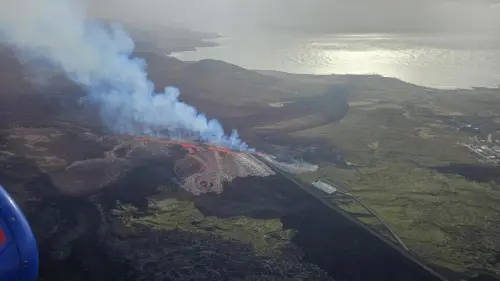A volcano erupted south of Iceland's capital, releasing lava and smoke in a striking display of orange and red, prompting the evacuation of tourists and residents. However, air traffic remained unaffected.
Known as a land of ice and fire, Iceland has experienced 11 eruptions south of Reykjavik since 2021, following nearly 800 years of geological dormancy.
The Icelandic meteorological office issued a warning, stating, "An eruption has begun."
The eruption occurred near Grindavik, leading to the evacuation of residents who had recently returned after previous eruptions, although most homes have been vacant for over a year.
"There is lava coming within the barrier at the moment, but it's a very limited eruption so far," said Rikke Pedersen, head of the Nordic Volcanological Center.
Emergency services also evacuated the nearby Blue Lagoon luxury spa in anticipation of the eruption, as geologists had warned it was imminent.
Pedersen noted that this eruption is comparable in size to one in January 2024, which sent lava into Grindavik.
So far, the eruptions on the Reykjanes Peninsula have not directly impacted Reykjavik and have not led to significant ash dispersal, thereby avoiding disruptions to air travel.
Icelandic experts expect that these fissure eruptions, characterized by lava emerging from long cracks in the earth's crust rather than a single volcanic vent, could continue for decades or even centuries.
Home to nearly 400,000 people, Iceland attracts thousands of tourists each year drawn to its dramatic landscapes, including geysers, hot springs, and volcanoes.
Situated along the Mid-Atlantic Ridge, where the Eurasian and North American tectonic plates are diverging, Iceland is largely covered by black lava fields, juxtaposed with glaciers and lush green moss.
